Home > Products > intermediate
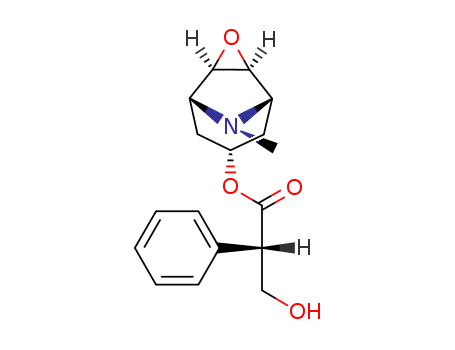
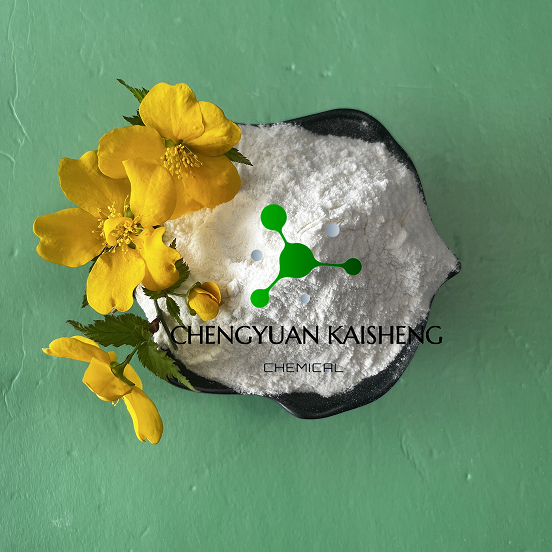
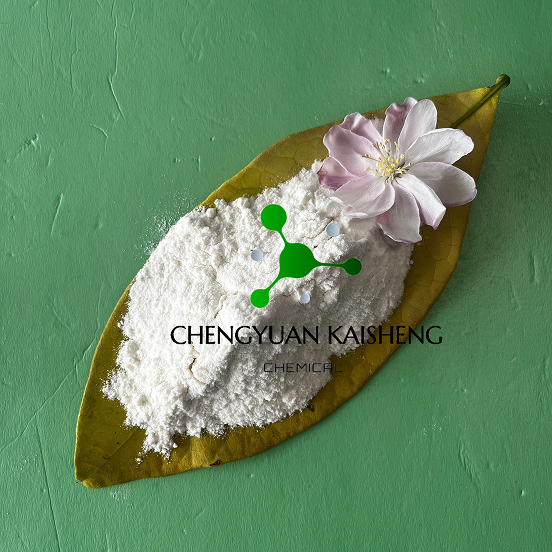
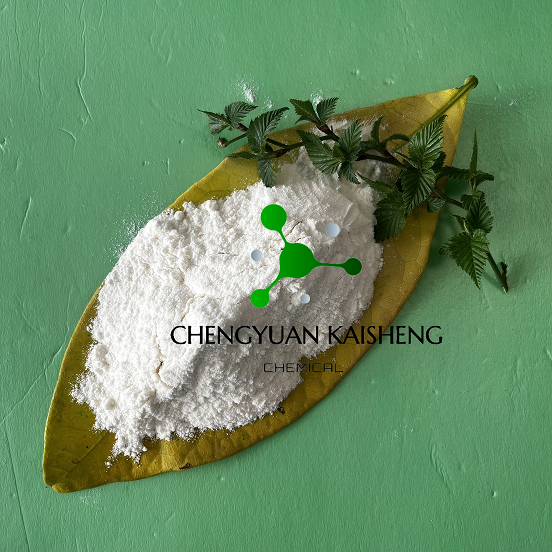




CasNo: 51-34-3
MF: C17H21NO4
Appearance: White crystalline powder
|
Physical properties |
Appearance: a kind of viscous liquid, brown color. Solubility: soluble in ethanol, ethyl ether, chloroform, acetone, and water, very soluble in hot water, slightly soluble in benzene and petroleum ether, and also soluble in cold water. It can generate various crystals with multiple inorganic or organic acids. Melting point: 59±1.0?°C |
|
History |
Scopolamine is the main active ingredient of Scopolia japonica, Datura metel L., and other Solanaceae plants. As early as 1892, the chemist E.?Schmidt first isolated it from the Scopolia japonica, so named it as scopolamine. Due to its obvious deficiencies in solubility and usage, the researchers modified its structure as scopolamine butylbromide, which was synthesized and used scopolamine and bromo-n-butane with heating refluxing method. Preparation method of scopolamine butylbromide is simple, and it’s easy to be synthesized. There are about 170 domestic enterprises producing its raw materials currently.European Pharmacopoeia (9th ed.), United States Pharmacopeia (36), and the Japanese Pharmacopoeia (16th ed.) contained bromine scopolamine; British Pharmacopoeia (2015) contained the raw materials and preparations of scopolamine butylbromide, including tablets and injections. Pharmacopoeia of the People’s Republic of China (2015) contained its raw materials, injection, and capsules. |
|
Definition |
ChEBI: A tropane alkaloid that is the (S)-tropic acid ester of 6beta,7beta-epoxy-1alphaH,5alphaH-tropan-3alpha-ol. |
|
Brand name |
Isopto Hyoscine (Alcon); Transderm-Scop (Ciba-Geigy);Diban;Donnagel-pg;Donnatal;Phenacon;Ru-tuss;Scopoderm tts;Spasmofen;Susano;Tropax. |
|
World Health Organization (WHO) |
Scopolamine, an alkaloid with anticholinergic activity extracted from solanaceous plants, was introduced into medicine in 1888. It is used as a mydriatic, as an anti-emetic for the control of motion sickness, and for premedication in general anaesthesia. Shortly after their introduction in the early 1980's, transdermal delivery systems containing scopolamine that were indicated for the prevention of motion sickness were associated with visual disorders (e.g. mydriasis, glaucoma) and hallucinations. The action taken in Norway is in accordance with the legislation in several other countries where these preparations have always been subjected to prescription control. |
|
General Description |
Scopolamine (hyoscine) is found in variousmembers of the Solanaceae (e.g., H. niger, Duboisia myoporoides,Scopolia spp., and Datura metel). Scopolamineusually is isolated from the mother liquor remaining from theisolation of hyoscyamine.Hyoscine is the older name for this alkaloid, althoughscopolamine is the accepted name in the United States.Scopolamine is the levo component of the racemic mixturethat is known as atroscine. The alkaloid is racemized readilyin the presence of dilute alkali.The alkaloid occurs in the form of a levorotatory, viscousliquid that is only slightly soluble in water but very solublein alcohol, chloroform, or ether. It forms crystalline saltswith most acids, with the hydrobromide being the most stableand the most popularly accepted. An aqueous solution ofthe hydrobromide containing 10% mannitol is said to be lessprone to decomposition than unprotected solutions. |
|
Pharmacology |
Scopolamine butylbromide, a modified scopolamine, is a peripheral anti-choline drug; it not only can smooth muscle spasm but also block the ganglion and neuromuscular junction and has the weak effect on center. This drug has stronger effects on intestinal smooth muscle spasm than atropine and anisodamine; it can selectively relieve gastrointestinal tract, biliary tract, and urinary tract smooth muscle spasm and inhibit its peristalsis. Scopolamine butylbromide has less effects on the heart, pupil, and salivary gland, so it rarely induces central nervous excitement, dilation, inhibition of saliva secretion, and other adverse reactions, which is unlike atropine.Scopolamine butylbromide is an antagonist of the M cholinergic receptor, its pharmacological effects are similar to atropine, but it has its own characteristics that have an obvious advantage in improving blood microcirculation.Oral absorption of scopolamine butylbromide is not easy. It produces efficacy at 2–4?min after intravenous injection, 8–10?min after subcutaneous or intramuscular injection, and 20–30? min after oral administration, which could maintain about 2–6?h . |
|
Safety Profile |
Poison by intravenous, intraperitoneal, and subcutaneous routes. Moderately toxic by ingestion. Human systemic effects from very small amounts by subcutaneous and intramuscular routes: changes in surface EEG, dstorted perceptions, excitement, hallucinations, and mydriasis. It can cause the individual who is affected to lose a certain amount of his normal inhibitory control. It is for that reason that it has been called “truth serum.” An experimental teratogen. Experimental reproductive effects. Human mutation data reported. In many cases of poisoning from ths material, and even to a certain extent following its medcal application, there is retention of the urine caused by paralysis of the bladder, and catheterization is necessary. The fatal dose is variable. Death has occurred from as little as 0.6 mg, whde recovery has occurred from doses of 7-1 5 mg. An anticholinergc drug. When heated to decomposition it emits highly toxic fumes of NOx. See also ESTERS |
|
Synthesis |
Scopolamine, the L-9-methyl-3-oxa-9-azatricyclo[3.2.1.0.2,4]non-7-yl ester of α-hydroxymethylphenylacetic acid (14.1.6), can be synthesized from tropenol (14.1.2) by oxidizing the double bond between carbon atoms C6 and C7 of the tropine ring, giving an epoxide derivative, scopine (14.1.5). Esterification of this product using tropic acid gives scopolamine (14.1.6) [7,8]. |
|
Metabolism |
It is almost completely metabolized in the liver and is excreted via the kidneys. Its elimination half-life is approximately 8 hours. |
|
Purification Methods |
Crystallise it from *benzene/pet ether, EtOH or H2O. It is polymorphic with m 165-166o and 190-191o. The racemate has m 56-57o (H2O), 37-38o (2H2O), syrup (anhydrous), l and d isomers can separate as syrups when anhydrous. [Beilstein 27 H 99, 102, 27 I 247-248, 27 II 43-44, 27 III/IV 1790.] |
InChI:InChI=1/C9H10O3.C8H13NO2/c10-6-8(9(11)12)7-4-2-1-3-5-7;1-9-5-2-4(10)3-6(9)8-7(5)11-8/h1-5,8,10H,6H2,(H,11,12);4-8,10H,2-3H2,1H3
Axially chiral trifluoromethylbenzimidaz...
Hyosine butyl bromide, the active ingred...
We report a simple one-pot protocol that...
Scopolamine was synthesized using 6,7-de...
![(αS)-α-(hydroxymethyl)benzeneacetic acid (endo)-8-methyl8-azabicyclo[3.2.1]oct-6-en-3-yl ester](/upload/2025/4/ede9598e-e13a-495f-bdc3-b8fdd96a0bb6.png)
(αS)-α-(hydroxymethyl)benzeneacetic acid (endo)-8-methyl8-azabicyclo[3.2.1]oct-6-en-3-yl ester

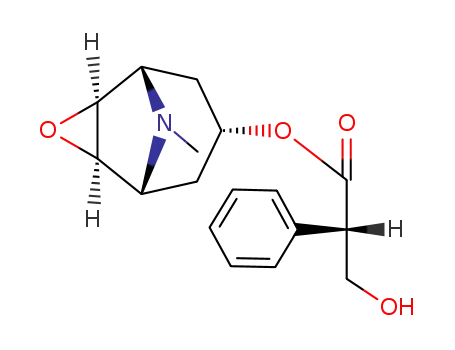
scopolamine
| Conditions | Yield |
|---|---|
|
With
α-ketoglutaric acid; Atropa belladonna C-terminally hexahistidine-tagged hyoscyamine 6β-hydroxylase; iron(II) sulfate; sodium L-ascorbate; catalase;
pH=7.6;
aq. buffer;
Enzymatic reaction;
|
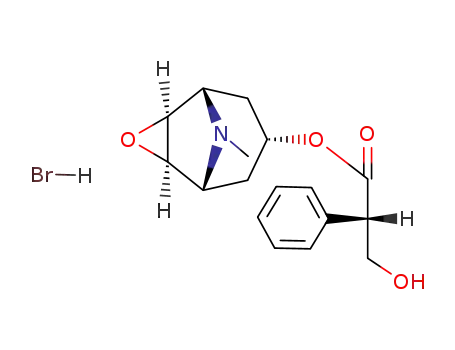
hyoscine hydrobromide


scopolamine
| Conditions | Yield |
|---|---|
|
With
sodium carbonate;
In
water; ethyl acetate;
at 0 ℃;
for 0.25h;
Reagent/catalyst;
|
0.6 g |
|
With
sodium hydroxide;
In
water;
pH=10;
Inert atmosphere;
|
|
|
With
sodium hydroxide;
In
water;
pH=10;
|
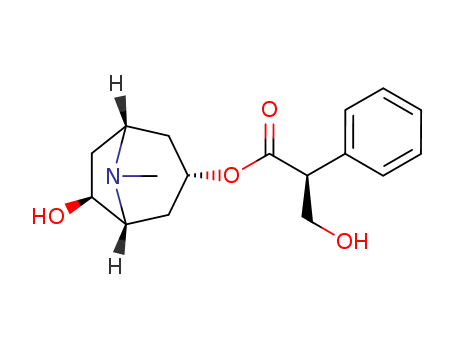
(-)-Anisodamine
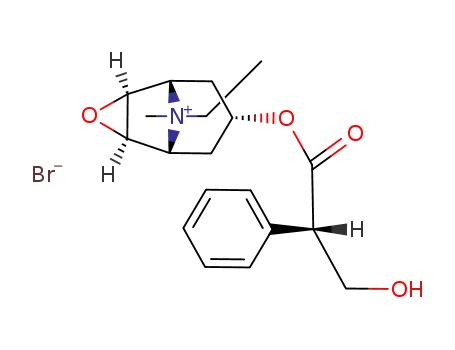
oxytropium bromide
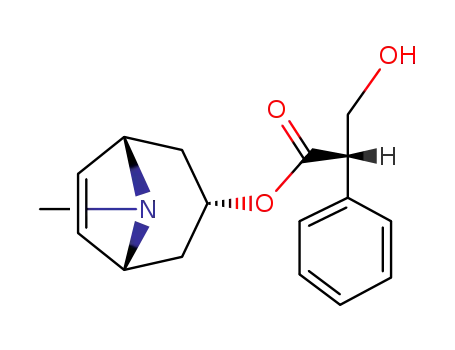
(αS)-α-(hydroxymethyl)benzeneacetic acid (endo)-8-methyl8-azabicyclo[3.2.1]oct-6-en-3-yl ester

hyoscine hydrobromide
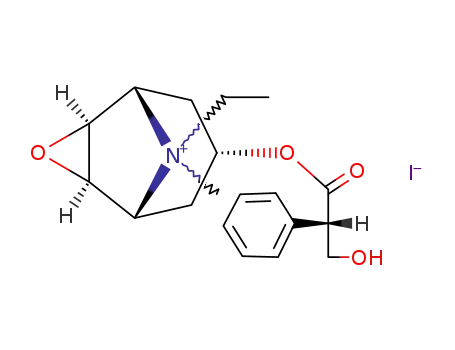
8ξ-ethyl-6exo,7exo-epoxy-8ξ-methyl-L-3-tropoyloxy-nortropanium; iodide
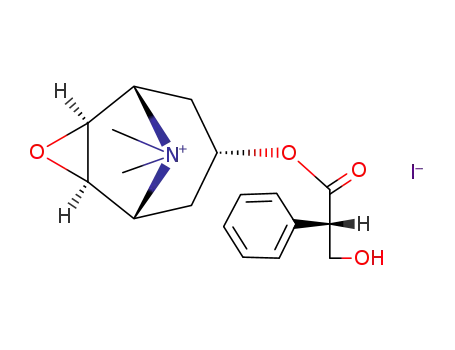
7t-(3-hydroxy-2-phenyl-propionyloxy)-9,9-dimethyl-(1rN,2tH,4tH,5cN)-3-oxa-9-aza-tricyclo[3.3.1.02,4]nonanium; iodide
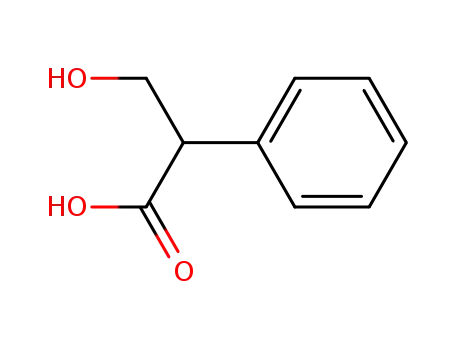
Tropic acid
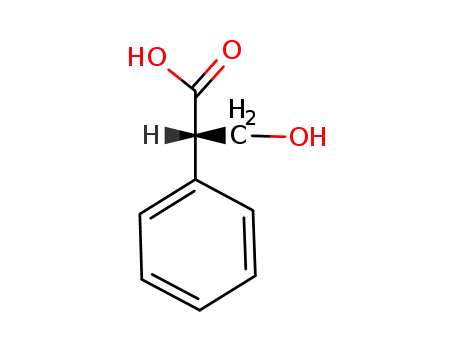
(S)-tropic acid